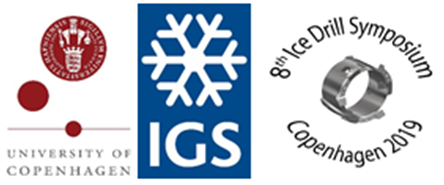Speakers
Description
Introduction: Europa is a primary target in the search for past or present life because it is potentially geologically active and likely possesses a deep global ocean in contact with a rocky core underneath its outer ice shell. Theory and observation indicate that the icy surface shell is approximately 3-30 km thick, depending on models [1, 2].
Reaching Europa Ocean: To reach the subsurface ocean, where life may be most prevalent, a probe would need to penetrate the icy formation while moving the excavated material behind it. This operation can be achieved via two methods: thermal (melting) or mechanical (cutting). Mechanical systems break the icy material efficiently, but transport ice chips inefficiently. Thermal systems have an effective chip removal approach, but a power intensive ice-melting step. The Search for Life Using Submersible Heated (SLUSH) drill is a hybrid, thermo-mechanical drill probe system that combines the most efficient aspects of these two techniques [5].
SLUSH is 5 m long, 57 cm diameter probe with a heated drill bit in front, antitorque cutters on the side, and several tether bays on top (Figure 1). The probe is partially flooded – only critical subsystems are inside a pressure vessel; this allows the probe to sink rather than float.
SLUSH utilizes a mechanical drill to break the formation, and partially melts the fragments to enable the efficient transport of material behind the probe. The resulting slush behaves like liquid despite being partially frozen, enabling a significant reduction of the power required for melting the full volume of ice. Further, because a mechanical approach generates higher penetration rates, SLUSH can reach the ocean in a much shorter time than a pure melt probe. Once SLUSH passes through the hazardous cryogenic ice, it could use a purely thermal approach to melt through the warmer ice without the need for mechanical cutting.
SLUSH incorporates the Kilopower reactor for both thermal and electrical needs. The fission reactor can be turned on/off and is self-moderating, significantly simplifying thermal management. The probe is physically connected to a surface lander by a communications tether, housed in several spool bays that are left behind in the ice once the spool is depleted. This allows each tether section to be purpose-designed. For example, the top section, which may see 150 kPa shear stresses on a diurnal cycle, will be reinforced with Kevlar. Leaving the spools behind also shortens the probe length as it descends, making penetration more efficient.
While Kevlar reinforcement and the refrozen channel left behind by the probe may provide protection from the diurnal stress environment, if the tether does break, broken sections can be used as “Tunable Tether” for communication. RF and acoustic communication could potentially provide a backup communication by incorporating transceivers into each spool section.
Figure 1. Conceptual design of SLUSH
Acknowledgments: This work is funded by NASA’s PICASSO and SESAME Programs.
References: [1] Ojakangas and Stevenson (1989), Thermal state of an ice shell on Europa, Icarus; [2] Hand and Chyba, (2007), Empirical constraint on the salinity of the Europan ocean and implications for a thin ice shell, Icarus [3] Pappalardo et al. (1998), Geological evidence for solidstate convection in Europa's ice shell, Nature, [4] Turtle and Pierazzo, (2001), Thickness of a Europan Ice Shell from Impact Crater Simulations, Science [5] Zacny et al., (2018), SLUSH: Europa Hybrid Deep Drill, IEEE Aerospace Conf

